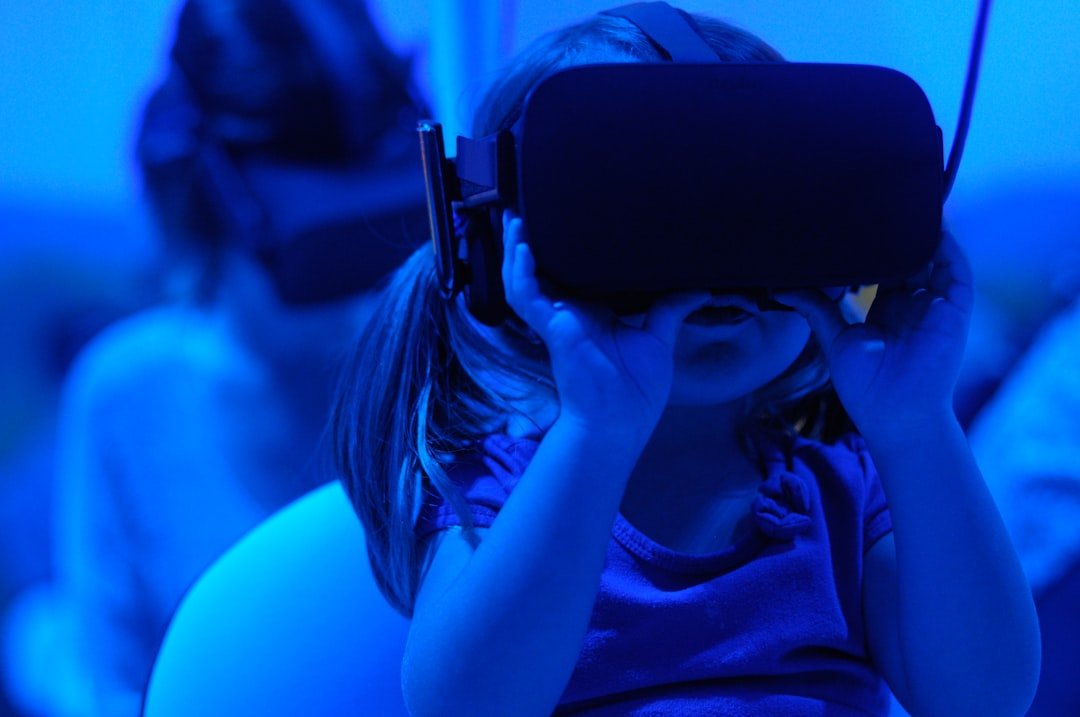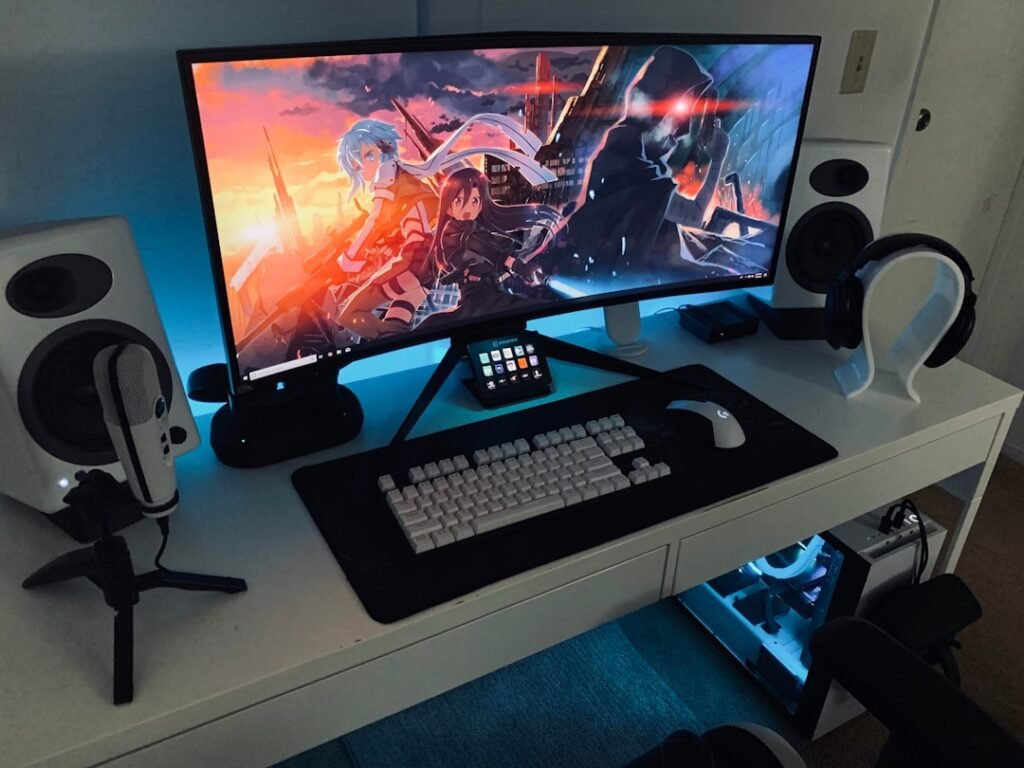Now Reading: The Future of Gaming Journalism: Adapting to New Media
-
01
The Future of Gaming Journalism: Adapting to New Media
The Future of Gaming Journalism: Adapting to New Media

As I reflect on the evolution of gaming journalism, it’s impossible to ignore the significant rise of new media platforms that have transformed the landscape. Gone are the days when traditional print magazines and static websites dominated the scene. Today, platforms like YouTube, Twitch, and various social media channels have emerged as powerful players in the dissemination of gaming news and reviews.
This shift has not only democratized the flow of information but has also allowed for a more diverse range of voices to be heard. I find it fascinating how these platforms enable anyone with a passion for gaming to share their insights, critiques, and experiences with a global audience. The rise of new media platforms has also led to a more dynamic and interactive form of journalism.
Unlike traditional media, where the audience is often a passive consumer of content, new media encourages engagement and dialogue. I’ve noticed that many gaming journalists now utilize platforms like Twitter and Reddit to interact directly with their audience, fostering a sense of community and collaboration. This shift has not only changed how news is reported but has also influenced the types of stories that are told.
With real-time feedback from viewers, journalists can adapt their content to better meet the interests and needs of their audience, creating a more responsive and relevant form of journalism.
Key Takeaways
- New media platforms have revolutionized gaming journalism, providing a diverse range of voices and perspectives.
- Social media has significantly impacted gaming journalism, allowing for real-time updates, community engagement, and viral content.
- Influencers and streamers play a crucial role in gaming journalism, shaping opinions and driving audience engagement.
- Video and audio content have become essential in gaming journalism, offering immersive experiences for audiences.
- Interactive and immersive experiences are key in gaming journalism, allowing for deeper audience engagement and understanding of games.
The Impact of Social Media on Gaming Journalism
Social media has undeniably reshaped the way gaming journalism operates. I’ve observed that platforms like Twitter and Facebook serve as vital tools for journalists to share breaking news, updates, and insights almost instantaneously. This immediacy allows for a more fluid exchange of information, where journalists can report on events as they unfold, keeping their audience informed in real-time.
The ability to share multimedia content—such as videos, images, and live streams—has also enriched the storytelling aspect of gaming journalism, making it more engaging and visually appealing. Moreover, social media has become a breeding ground for discussions and debates surrounding gaming culture. I often find myself scrolling through threads where gamers express their opinions on recent releases or industry trends.
This level of interaction not only enhances the journalistic process but also provides valuable insights into what gamers are thinking and feeling. As a result, journalists can tailor their content to reflect the pulse of the community, ensuring that their work resonates with readers. However, this constant connectivity also comes with challenges, such as the spread of misinformation and the pressure to produce content quickly, which can sometimes compromise journalistic integrity.
The Role of Influencers and Streamers in Gaming Journalism

In recent years, influencers and streamers have emerged as pivotal figures in the realm of gaming journalism. I’ve seen how these individuals have cultivated massive followings by sharing their gameplay experiences, reviews, and personal insights. Their authenticity and relatability often resonate more with audiences than traditional journalists, leading to a shift in how information is consumed.
Many gamers now turn to their favorite streamers for recommendations on new titles or updates rather than relying solely on established gaming news outlets. The influence of these personalities extends beyond mere entertainment; they often shape public perception and discourse around games. I’ve noticed that when a popular streamer endorses or criticizes a game, it can significantly impact its reception in the market.
This phenomenon highlights the blurred lines between journalism and entertainment in the gaming world. While some influencers strive to maintain journalistic standards in their content, others may prioritize entertainment value over factual accuracy. This duality raises important questions about credibility and responsibility in gaming journalism.
Adapting to Video and Audio Content in Gaming Journalism
As I navigate through the evolving landscape of gaming journalism, it’s clear that video and audio content have become essential components of storytelling. The rise of platforms like YouTube and podcasting has prompted many journalists to adapt their skills to create engaging visual and auditory experiences. I’ve found that video content allows for a more immersive exploration of games, showcasing gameplay mechanics, graphics, and narratives in ways that written articles simply cannot achieve.
Podcasts have also gained traction as a medium for discussing gaming news and trends. I enjoy tuning into various gaming podcasts where hosts delve into topics ranging from game design to industry controversies. The conversational format fosters a sense of intimacy and connection with listeners, making complex subjects more accessible.
However, this shift towards multimedia content also presents challenges; journalists must now be proficient in various forms of media production while maintaining high standards of quality and accuracy.
The Importance of Interactive and Immersive Experiences in Gaming Journalism
In an age where interactivity is paramount, I’ve come to appreciate how gaming journalism is increasingly embracing immersive experiences. Interactive articles, live streams, and virtual reality (VR) content allow audiences to engage with stories in unprecedented ways. For instance, I’ve encountered articles that incorporate interactive elements, enabling readers to explore game worlds or make choices that affect the narrative outcome.
This level of engagement not only enhances the storytelling experience but also fosters a deeper connection between the audience and the subject matter. Moreover, immersive experiences can provide valuable insights into game design and mechanics. As I participate in live demos or VR experiences at gaming conventions, I gain firsthand knowledge that enriches my understanding of the games being discussed.
This hands-on approach allows journalists to convey their experiences more authentically, bridging the gap between creators and consumers. However, as exciting as these developments are, they also require journalists to continually adapt their skills and approaches to keep pace with technological advancements.
The Evolution of Gaming Reviews and Critiques in New Media

The landscape of gaming reviews has undergone a significant transformation with the advent of new media platforms. I’ve noticed that traditional review scores are becoming less relevant as audiences seek more nuanced critiques that consider various aspects of gameplay, narrative, and design. Many gamers now prefer in-depth analyses that explore not just whether a game is “good” or “bad,” but also why it resonates with certain audiences or fails to meet expectations.
This evolution has led to a more diverse range of review formats. I’ve seen video essays that combine gameplay footage with critical commentary, offering viewers a richer understanding of a game’s strengths and weaknesses. Additionally, community-driven reviews on platforms like Steam or Metacritic allow players to share their experiences directly with one another.
This shift towards collaborative critique emphasizes the importance of community voices in shaping perceptions about games, challenging traditional notions of authority in journalism.
The Challenges and Opportunities of Virtual Reality in Gaming Journalism
As virtual reality technology continues to advance, I find myself both excited and cautious about its implications for gaming journalism. On one hand, VR offers unprecedented opportunities for immersive storytelling and experiential reporting. I’ve experienced VR demos that transport me into fantastical worlds, allowing me to engage with games on a level previously thought impossible.
This technology has the potential to revolutionize how we report on games by providing audiences with firsthand experiences that enhance understanding. However, there are also significant challenges associated with VR in journalism. The cost of equipment can be prohibitive for both journalists and audiences alike, limiting accessibility.
Additionally, creating high-quality VR content requires specialized skills that not all journalists possess. As I navigate this landscape, I recognize the need for ongoing education and collaboration within the industry to ensure that VR is utilized effectively while maintaining journalistic integrity.
The Future of Gaming Events and Conventions in New Media
Gaming events and conventions have long been pivotal moments for journalists to connect with developers and showcase upcoming titles. As I look toward the future, it’s clear that these events are evolving alongside new media trends. While traditional conventions like E3 have faced challenges in recent years, virtual events have emerged as viable alternatives that allow for broader participation from both industry professionals and fans.
I’ve participated in several online conventions where developers showcase their games through live streams and interactive panels. These formats not only reach a global audience but also foster inclusivity by allowing fans who may not have been able to attend physical events to engage directly with creators. However, as these events continue to evolve, I recognize the importance of maintaining meaningful interactions between journalists, developers, and audiences to ensure that the essence of gaming culture remains intact.
The Role of Data Analytics and Audience Engagement in Gaming Journalism
In today’s data-driven world, I’ve come to appreciate how analytics play a crucial role in shaping gaming journalism. By analyzing audience engagement metrics—such as views, shares, comments, and likes—journalists can gain valuable insights into what resonates with their readers or viewers. This information allows me to tailor my content more effectively while ensuring that it aligns with audience interests.
Moreover, data analytics can inform editorial decisions regarding which topics to cover or how to present information. I’ve seen many gaming outlets utilize analytics tools to identify trends within the community or gauge reactions to specific releases. This level of responsiveness not only enhances journalistic relevance but also fosters a sense of connection between creators and consumers.
The Ethics and Responsibility of Gaming Journalism in the Digital Age
As I navigate the complexities of gaming journalism in the digital age, ethical considerations remain at the forefront of my mind. With the rise of new media platforms comes an increased responsibility to uphold journalistic integrity while navigating issues such as misinformation and sensationalism. I’ve witnessed instances where clickbait headlines overshadow substantive reporting, leading to confusion among audiences.
It’s essential for journalists like myself to prioritize accuracy and transparency in our work while fostering trust within our communities. This commitment extends beyond individual articles; it encompasses broader conversations about representation within gaming culture and accountability for both creators and consumers alike.
Collaboration and Competition in the New Media Landscape of Gaming Journalism
In this rapidly evolving landscape, collaboration among journalists has become increasingly important amidst fierce competition for audience attention. I’ve seen how partnerships between different outlets can lead to innovative storytelling approaches that benefit both creators and consumers alike. By sharing resources or expertise, we can elevate our collective work while fostering a sense of camaraderie within the industry.
However, competition remains an inherent aspect of new media journalism as well. With countless voices vying for attention online, standing out requires creativity and originality. As I navigate this duality—collaboration versus competition—I recognize that striking a balance is crucial for fostering a vibrant ecosystem where diverse perspectives can thrive while maintaining high standards of quality in our work.
In conclusion, as I reflect on my journey through gaming journalism amidst these transformative changes brought about by new media platforms, social media dynamics, influencer culture, immersive experiences, evolving review formats, VR challenges/opportunities , event innovations , data analytics , ethical responsibilities ,and collaborative efforts—I am filled with excitement about what lies ahead . The future promises endless possibilities for storytelling within this dynamic field ,and I am eager to continue exploring its uncharted territories .

















